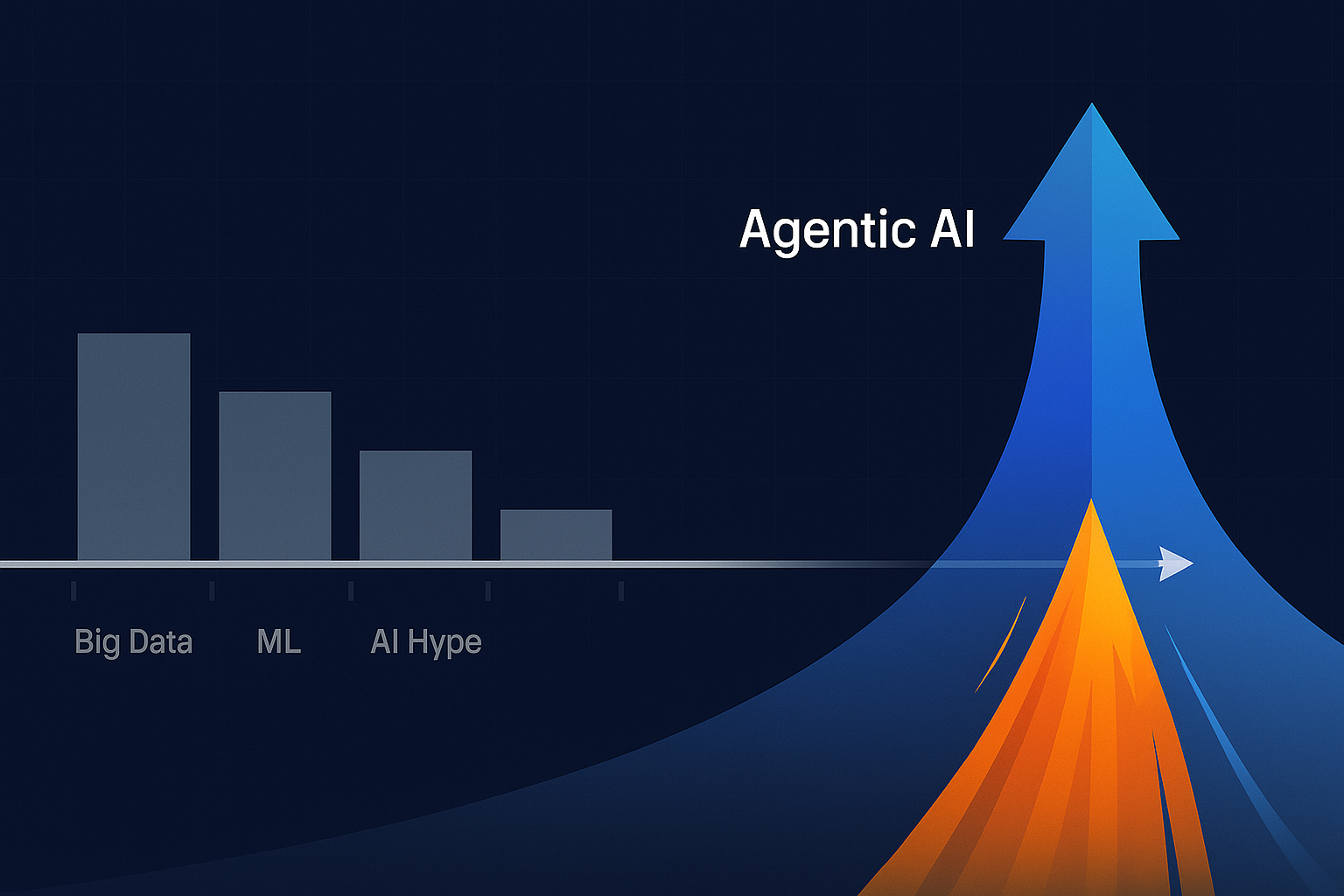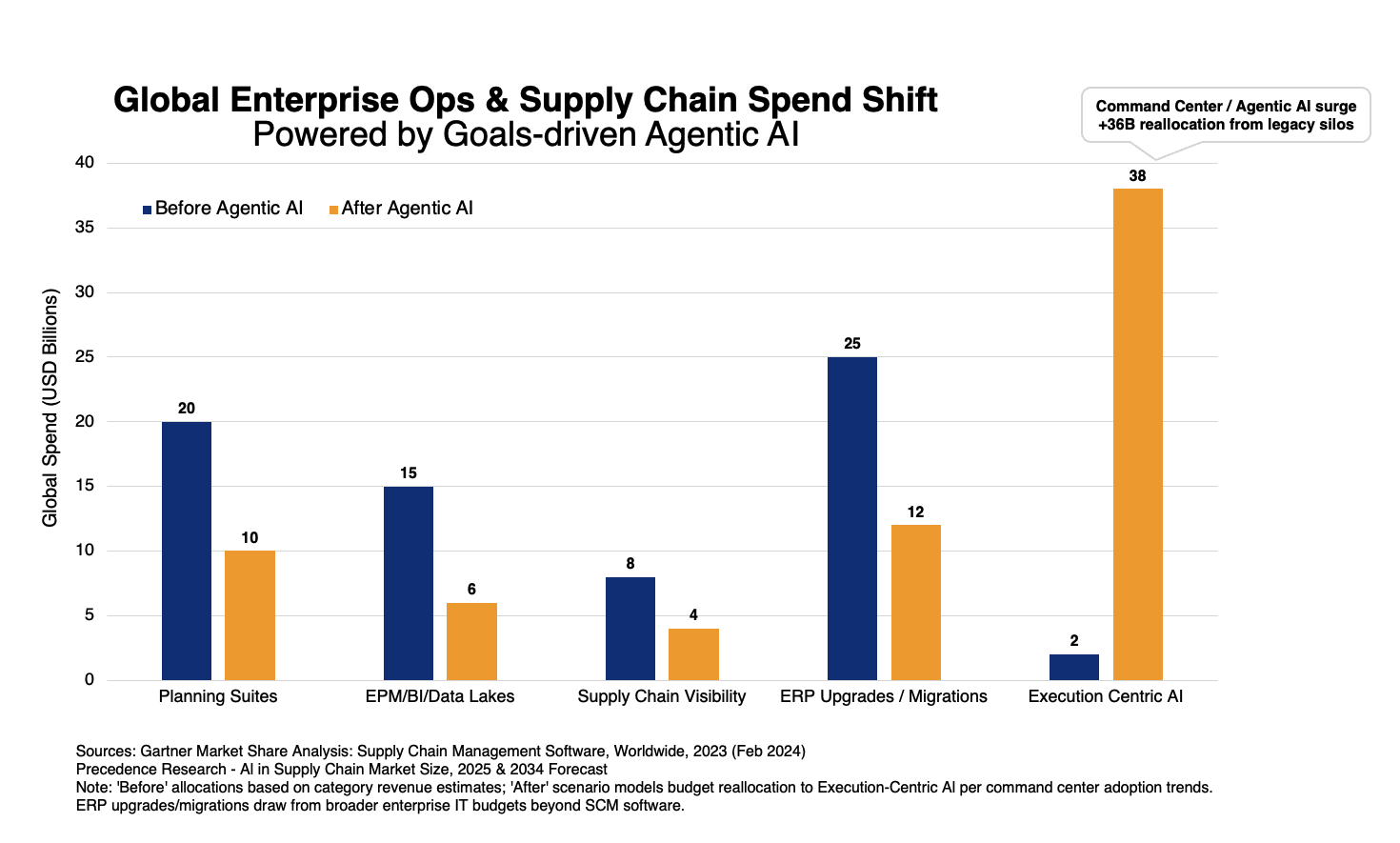Ushering In AI’s "Weeks When Decades Happen"
This is the second of a two-part set of articles on OpsVeda’s approach to Agentic AI. See the first part here.
Alice: Cheshire Puss, would you tell me please, which way I ought to walk from here??
The Cheshire Cat: That depends a good deal on where you want to get to.
Alice: I don't much care where.
The Cheshire Cat: Then it doesn't much matter which way you go.
Alice: ...So long as I get somewhere.
The Cheshire Cat: Oh, you're sure to do that, if only you walk long enough.
― Lewis Carroll in Alice in Wonderland
The above exchange between Alice and the Cheshire Cat pretty much sums up how AI decisions are being made in many organizations. Managements have been working under the assumption (or faith) that if it is AI, it’s going to do a world of good for their organizations and they should just move forward. And of course, as the Cheshire Cat assured, they did get “somewhere” though in most cases it was nowhere close to anything they hoped for.
Picking the Right Processes – Getting Somewhere Worthy with Agentic AI
In the first part of the blog, we focused on some aspects of Agentic AI (goal orientation, workflow planning/execution, and tool use) that could fix the state of Enterprise AI. The edge that OpsVeda customers have in easily deploying this technology was also covered. But technology is a means to an end and deployment by itself doesn’t guarantee success.
What else is needed so that managements are not just “getting somewhere” but are delivering tangible & intangible ROIs with Agentic AI? Sapient choice of use cases can go a long way. A few criteria to be considered:
- Scale: Pick workflows that have the volumes and are repeatable. Not having too many boundary conditions and exceptional situations will make it easier to scale and hence have a better shot at a credible ROI.
- Business Relevance: Ensure that the workflow is one that is part of the core business and something whose volumes will increase with growth in the business. Workflows that are critical to the top or bottom line bring in top management buy in and support. This will pay off during the initial days when there might be teething problems. Further this will also help defining the Agent’s goal and identifying the human roles that will be supported.
- Error Propensity: As with all automation, picking processes that are prone to human errors will ensure that the right roles are being targeted. Processes where the errors generally lead to expensive downstream outcomes, make them even better candidates and greatly improves the chances of a good ROI.
- Tools vs. LRM Reasoning vs. Human: This is a delicate balance. Too much Large Reasoning Model (LRM) reasoning can lead to reliability issues and human time spent on validation. Too little LRM reasoning could mean additional tool development during deployment. While the exact balance is difficult to ascertain upfront, time spent planning this generally ensures a smoother transition at the time of go-live.
- Rewards vs. Penalties: The Agent (and hence workflow) improving over time can be a tremendous boost to the ROI. Agentic AI leverages Reinforcement Learning (“RL” – discussed later) to improve the automated process over time. RL works on a system of rewards and penalties. These must be defined based on the outcomes of the Agent’s actions. In some cases (like inventory optimization) the reward/penalty function is easy to define because of data availability. In other cases, it is worthwhile putting in the effort to figure this during design time. Ease of definition of such rewards/penalties may be factored in when selecting the workflows for Agentic AI.
- Measuring Impact: Decide upfront how the ROI will be measured. This clarity will not only be necessary for management sponsorship but also will help when the Agent is being designed.
Reinforcement Learning – To be Competitive, Processes Must Improve
Picking the right workflows for Agentic AI is an awesome beginning. But the real icing on the cake is getting Agentic AI to improve the workflow over time. With RL, Agentic AI provides a data-driven approach to achieve this.
In numerous organizations, the way most processes are executed has remained largely unchanged for years, if not decades. Meanwhile, it is evident that the business environment itself has undergone substantial transformation. Elements such as suppliers, lead times, equipment, product lines, geopolitical factors, and transportation options continuously evolve.
The question then arises: why has standard operating procedures remained predominantly static? This stagnation cannot be attributed to a lack of initiative or awareness among managers. Rather, the primary challenge lies in the complexity of adapting to a landscape with numerous interdependent variables, making it difficult to identify effective processes within the current environment.
Agentic AI leverages RL to proactively adapt to the operating environment. With RL the agent keeps a tab on its environment, the actions it has taken, and changes to the environment its actions trigger. The results of its actions are linked to rewards and penalties which over time allows the agent to understand what is working and what is not. Thus, it can improve (or suggest improvements for human approval) the process proactively.
For example, consider an Agent maintaining optimal inventory levels. Every order that is fulfilled on time will earn it a good reward. Orders that are fulfilled late may also fetch rewards but not as much as the ones fulfilled on time. And for lost sales there will possibly be a large penalty. And there will also be a penalty each day each unit of inventory is held. And these rewards/penalties are easily calculated because the profit from a sale, cost of lost sales (lost profit), cost of holding inventory etc. are generally known. Using RL, the Agent tries to see patterns in the operating environment (e.g., sales during specific days of the week) and adjust its actions (e.g., reorder point, quantity to level up to etc.) to maximize its rewards (net of penalties). The Agent thus proactively adjusts the existing workflow or suggests changes to the workflow (e.g., shifting from a continuous review policy to a min-max policy).
The OpsVeda Edge
Given its history of streamlining operational processes, OpsVeda has been capturing data about the business environment from a plethora of sources. It has also been capturing actions taken by users and the result of those actions. Furthermore, OpsVeda’s opportunity and risk framework provides a unique way of easily quantifying the dollar impact of such actions or inactions. Put together, it completes the ingredients needed for the AI to leverage its RL capabilities to improve the process.
Bringing it All Together to Usher in AI’s “Weeks When Decades Happen”
In the first part of this blog, I had likened the state of AI to Lenin’s “decades when nothing happened.” By now, I hope that you share my optimism about how Agentic AI is going to be a game changer and will usher in for AI the second part of Lenin’s quote – “Weeks when decades happen.”
Naturally, Agentic AI will have an enormous impact on many industries and departments that are trying to mainstream AI. As you would expect, at OpsVeda we believe it will transform many operational activities. A sampling of the use cases that we are deploying is listed below. A few details based on the framework discussed over the course of this two-part blog is also provided.
|
Goal |
Supported Roles |
Select OpsVeda Tools |
RL Reward/Penalty Parameters |
|
Resolve differences in supplier confirmed quantity |
Procurement team member |
- Fetch purchase order - Fetch supplier acknowledgement/confirmation - Email (to communicate mismatch and potential reason like multiple shipments) - Update/cancel purchase order - Create purchase order (if additional POs are to be issued) |
Number of days when SKU inventory is not between upper & lower threshold |
|
Revaluate upcoming expedited shipments and see if any can be changed to less expensive regular shipments |
Logistics manager |
- Simulate Demand-Supply matching for RM/FG SKU to production/sales orders or forecasts |
Number of days when SKU inventory is below lower threshold |
|
Evaluate alternate options to fulfill orders for a SKU that is short |
Customer service manager |
- Check stock availability at alternate locations |
- Orders fulfilled on-time |
|
Maintain optimal inventory levels through stock transfers, pulling-in/ pushing-out/cancelling POs, returns to supplier & promotions |
- Inventory manager |
- Determine cost of lost sales of SKU |
- Orders fulfilled on-time |
|
Evaluate alternate options to handle raw material delay from supplier and pick least expensive one |
- Procurement team |
- Simulate Demand-Supply matching for RM options to production orders |
Number of days when finished goods inventory is below lower threshold
|
The above list is a mix of simple and complex use cases. Getting started with simpler use cases will reduce the risk and enable companies to quickly validate the technology. A gradual increase in the complexity will avoid overwhelming the system & team.
Still pondering about getting started with Agentic AI? Do some of the ideas mentioned sound arcane or daunting? Reach out to us. Autonomous Operations is closer and easier than you might be thinking.
Let OpsVeda help usher in the “AI Weeks when Decades Happen.”






